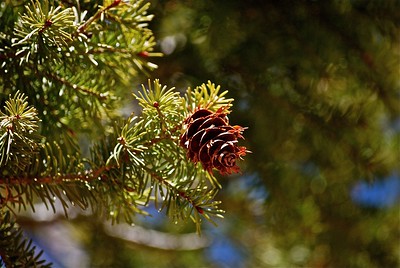
By Gerry Gourlay
Biologist
Welcome to Quick Question, where you get to ask experts the questions you’ve always wondered about! Here, Dr. Gerry Gourlay, who works at the University of Victoria and is the CAGIS coordinator for the Victoria chapter, tells us how you tell the difference between male and female trees.
Great question! There are in fact male and female trees for some tree species: roughly 6% for flowering seed plants and 50% for cone-bearing plants.

Species where you have male and female trees are often referred to as “dioecious.” In Greek, “di” means two and “oikos” means houses. What this means is that those plant species with male and female trees have two “houses” – one for female trees and one for male trees. These trees are entirely separate in structure but also in physical distance between one another. There will be one tree with female reproductive parts (which makes the seeds) and a separate tree with male reproductive parts (which has the pollen). This breakdown of trees into female and male trees is part of what is known as sexual dimorphism (“di” meaning two and “morph” meaning types or forms).
In order to tell them apart, you need to take a look at their reproductive structures, which are only visible during their active growing season. (Hint: you can tell trees are in their growing season when people who have pollen allergies start to sneeze and sniffle.)
For example, in poplar trees, female trees have female catkins, or flowers that hang down from the branch. These flowers are often green or white in colour, whereas on male trees the male catkins are often much bushier than the female catkins, and are a darker colour (more red or orange) because of the pollen in the male catkins.
Additionally, for most instances of flowering seed plants, the female flowers are smaller in size and width than the male flowers.
Cycads are some of the oldest living cone-bearing plants and have been dated to be around since the time of the dinosaurs or the Mesozoic era! Cycads have female cones that are often yellow in colour and shaped like a long oval with two pointy ends. The male cones are shaped more like an oval banana, are slenderer, and are orange in colour. Can you recall where the more “orange” colour comes from in the cones? Additionally, for most cone-bearing dioecious plants, the female cones are larger than the male cones.

Here on the Pacific Northwest, one of our favourite conifers are the Douglas Firs, which are monoecious, meaning they have male and female reproductive structures on the same tree! In fact, many commonly known conifers are monoecious. What are some other common conifers you can think of?





